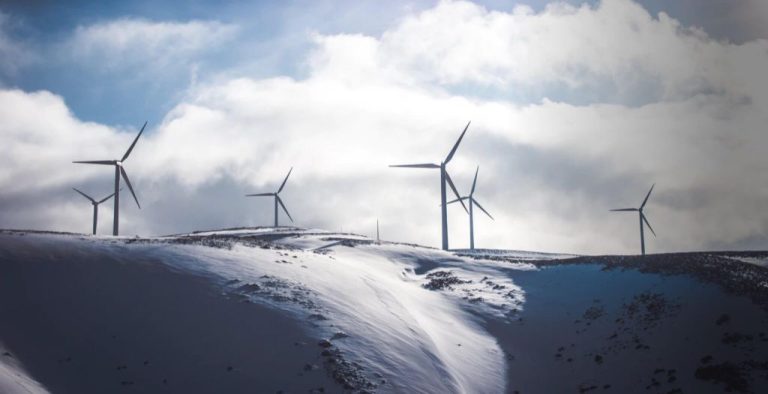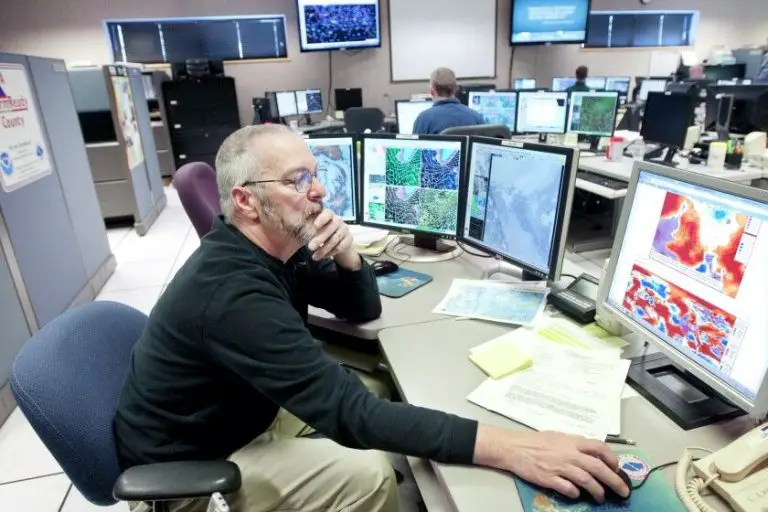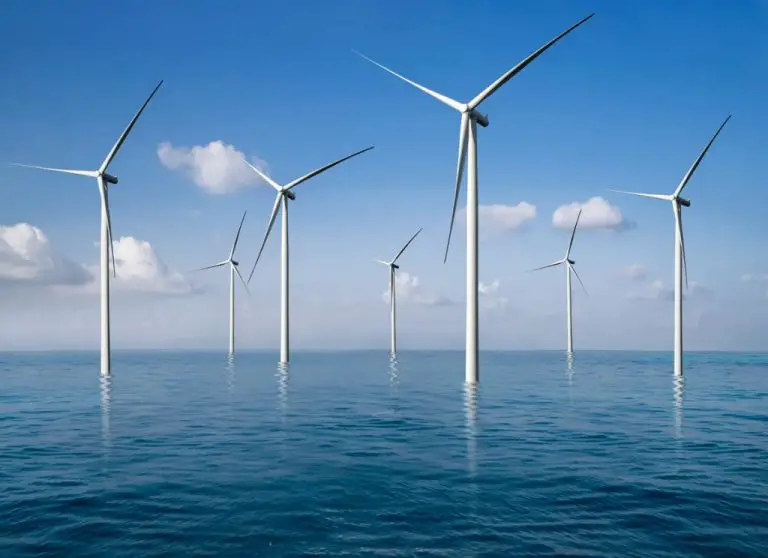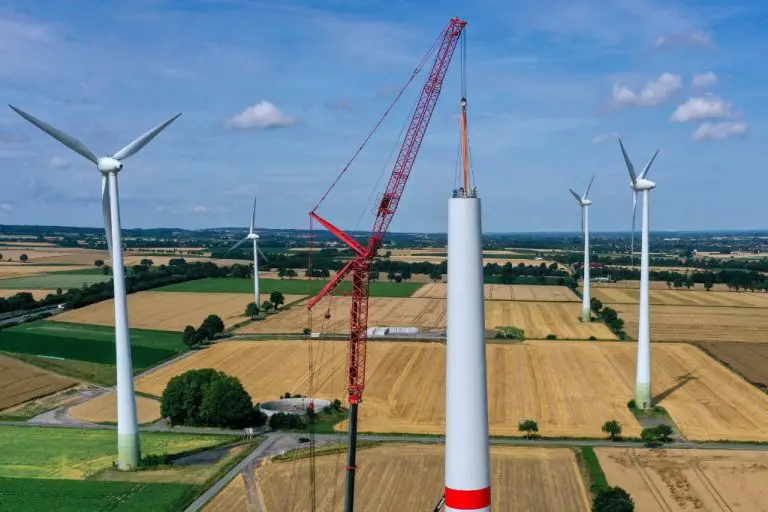What Parts Of A Wind Turbine Fail The Most?
Wind turbines are renewable energy systems that use the kinetic power of wind to generate clean electricity. They are comprised of several key components that all work together to convert wind energy into electrical energy. The main components of a wind turbine include the rotor blades, gearbox, generator, yaw system, hydraulic system, electrical system, tower, and bearings. Each component plays an important role in capturing wind energy and converting it into usable electricity.
As with any complex mechanical system operating in variable outdoor conditions, wind turbine components can be susceptible to wear and tear over time. Understanding the most common component failures can help wind farm operators maximize turbine uptime and productivity.
Rotor Blades
The rotor blades are one of the most common components of a wind turbine that fail. These massive blades can be over 150 feet long on modern wind turbines. They are subjected to tremendous stresses from the force of the wind as well as their own weight. Rotor blades are made of composite materials like fiberglass or carbon fiber which can crack and deteriorate over time.
The leading edges of the blades often suffer erosion damage from wind, sand, rain, and hail. The undersides of the blades can also accumulate dirt buildup which adds extra weight and imbalance. Additionally, lightning strikes can damage the blades. Even small defects in the blade surfaces or internal structure can lead to catastrophic failures if not detected early. As turbines age, the rotor blades become more prone to fatigue failures. Regular inspection and maintenance is crucial, but replacing damaged blades is expensive. For all these reasons, the rotor blades are one of the most common components to fail on wind turbines.
Gearbox
The gearbox is one of the more problematic components of a wind turbine. It contains a set of gears that converts the slow rotational speed of the rotor to a faster rotation that is more optimal for electricity generation. The gearbox steps up the rotational speed from about 10-60 rpm to 1000-1800 rpm. This allows the generator to produce electricity at the proper frequency.
Gearboxes experience high amounts of stress due to the constant torque and fluctuating wind speeds. Over time, the gears can degrade, resulting in increased noise and vibration. Eventually gear tooth failures can occur, requiring expensive repairs or full gearbox replacement. Proper lubrication and preventative maintenance helps extend gearbox lifetime. But fatigue loading and wear make gearbox reliability an ongoing challenge for wind turbines.
Generator
The generator is a critical component of a wind turbine that converts the mechanical energy from the spinning rotor blades into electrical energy. Inside the nacelle, the rotor and main shaft turn electromagnets around a set of stationary wire coils to induce an electric current. This process of electromagnetic induction produces the electricity that gets fed into the grid.
There are several types of generators used in wind turbines:
- Asynchronous or induction generators – These are simple and rugged generators that use the turning rotor to magnetize the coils and create current. They require additional components to synchronize the electricity to grid frequency.
- Synchronous generators – These have separate DC current magnetizing the coils so they generate power at a fixed frequency synchronized to the grid. They are more complex but avoid the need for additional synchronization equipment.
- Doubly-fed induction generators (DFIG) – A hybrid approach where the rotor feeds AC current to the stator coils. Only the rotor currents are converted to DC/AC allowing for variable speed operation.
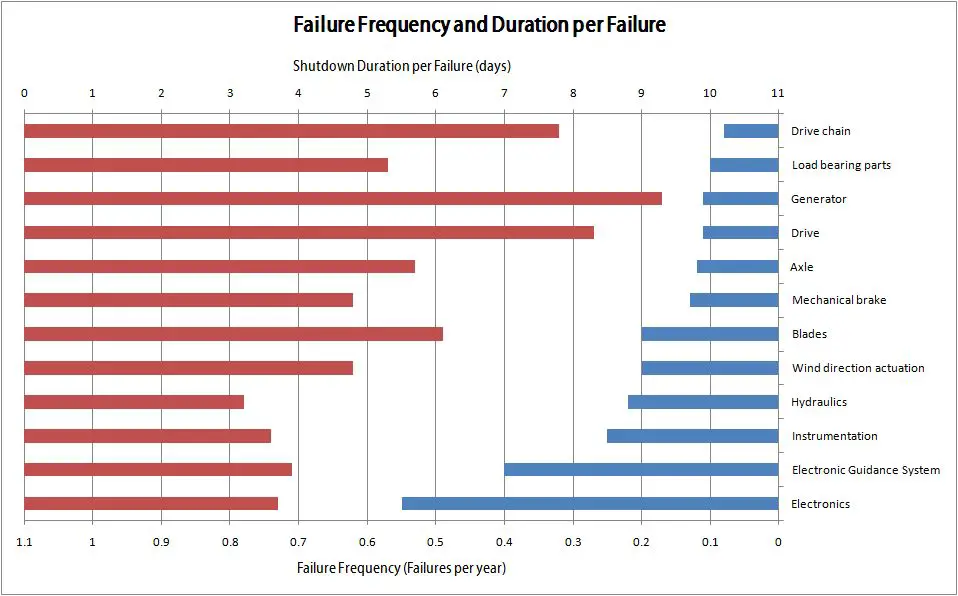
The generator sees significant stresses from the high-speed rotation within the nacelle. Bearings, insulation, and windings can deteriorate over time leading to reduced efficiency and potential failure. Preventative maintenance, inspection, and rewinding helps maximize generator lifespan.
Yaw System
The yaw system is responsible for orienting the wind turbine rotor to face into the wind. It consists of yaw motors and drives located in the nacelle which turn the entire turbine rotor and nacelle assembly. The yaw system actively tracks changes in wind direction to keep the rotor blades perpendicular to the wind, ensuring optimal power generation.
Failures in the yaw system can cause the turbine to fall out of alignment with the wind, reducing power output. Common issues include yaw motor and gearbox failures, problems with the yaw brakes, and failures in the yaw position sensors and controllers. Poor lubrication, excessive wear, electrical faults, and extreme weather events can all contribute to yaw system breakdowns. Because the yaw system moves large masses and withstands substantial wind loading, its components experience significant stresses and require regular maintenance.
Hydraulic System
The hydraulic system is another common failure point on wind turbines. This system uses pressurized hydraulic fluid to control key functions like the turbine’s brakes and blade pitch angle. Any leaks or failures in the hydraulic lines, valves, pumps or actuators can lead to the system losing pressure and failing to operate properly.
The brakes on a wind turbine require hydraulic pressure to remain open. If the hydraulic system fails, the brakes default to the closed position to stop the turbine from spinning. While this prevents runaway overspeed, it means the turbine is shut down until the hydraulic system can be repaired.
The pitch angle of the rotor blades is also controlled hydraulically. This allows the blades to be rotated to control rotor speed and optimize power production. Issues with the hydraulic pitch control can prevent the blades from properly feathering during high winds to regulate speed. This places more strain on the turbine at times when minimizing loads is most critical.
Keeping the hydraulic system in good working order through regular maintenance and prompt repairs when leaks or issues arise is key to avoiding failures that can bring wind turbines offline. The hydraulic system plays an integral role in controlling brakes and blade pitch to allow safe and optimized operation.
Electrical System
The electrical system of a wind turbine is responsible for carrying the electricity generated from the generator down the tower to be fed into the grid or used onsite. This system consists of complex wiring, transformers, and inverters that must withstand voltage spikes and fluctuations from the generator. Electrical failures are one of the most common issues on wind turbines.
The constant vibration and motion of the turbine puts stress on electrical components. Connections can loosen, wires can fray or short, and control boards can malfunction. Lightning strikes are also a major cause of electrical system damage. When lightning hits the turbine’s blades, the electrical charge surges down into components, blowing them out. Preventative maintenance like insulation testing and visual inspections help detect electrical problems before failure. However, the complexity of the system makes issues inevitable over time.
Failed electrical components like circuit boards, switches, and transformers are some of the most frequent replacement parts on wind turbines. The nacelle location and height of electrical systems also makes them challenging and dangerous to troubleshoot and repair. Safety is critical when dealing with the high voltage electricity. Overall, the electrical system’s role in harnessing power from the generator makes it prone to issues from vibration, weather, and age.
Tower Failures
The tower supports the rotor, nacelle, and other components high above the ground. Tower height is important for accessing stronger winds at higher altitudes. Towers are typically made of steel or concrete. Steel tubular towers are most common for modern horizontal-axis wind turbines.
Failures of the tower itself are relatively uncommon, but still can occur. Corrosion from moisture and salt can damage steel towers over time. Cracks or fractures in the welds or metal can also develop. Concrete towers can develop cracks or crumbling from material fatigue and exposure. Dynamic and asymmetric loads on the tower from high winds can contribute to cracking or buckling. Lightning strikes on the turbine may damage parts of the tower. Regular inspection and maintenance helps detect potential tower problems early. But complete tower collapses have occurred in some rare instances after developing unnoticed fatigue cracks or from manufacturing defects.
Bearings
Bearings play a critical role in wind turbines by allowing smooth rotation of shafts and reducing friction. The main shaft of a wind turbine connects the rotor to the gearbox, and bearings enable this shaft to spin freely. Other bearings are used throughout the drivetrain at key connection points.
The types of bearings used in wind turbines include roller bearings, ball bearings, and spherical roller bearings. These bearings consist of inner and outer raceways with rollers or balls between them to enable low-friction rotation. Proper lubrication and maintenance of bearings is essential to prevent wear and failure.
Bearing failures can occur due to factors like improper installation, contamination, excessive loads, misalignment, improper lubrication, and fatigue. Failed bearings can cause increased vibration, noise, heat generation, and eventually seizure of the shaft or gearbox. To maximize bearing life, wind turbine operators conduct frequent inspections, vibration monitoring, oil analysis, and follow rigorous maintenance procedures.
Conclusion
Wind turbines are complex machines composed of many intricate parts working together to convert kinetic wind energy into electrical energy. Though wind power is a renewable and clean source of energy, wind turbines are still susceptible to component failures and malfunctions that require maintenance and repairs.
Of all the components that make up a wind turbine, the most prone to failure are the rotor blades, gearbox, generator, yaw system, hydraulic systems, electrical systems, tower, and bearings. Rotor blades suffer fatigue and cracking over time from high winds and turbulence. Gearboxes often fail from high dynamic loads and require frequent oil changes and inspections. Generators can overheat or experience electromagnetic issues. Yaw systems and hydraulic pumps and motors are exposed to outdoor elements and wear out faster than other components. Electrical failures can occur from lightning strikes, power surges and aging circuitry. Towers risk structural failures from material fatigue and flaws. And bearings fail progressively over time from friction, contamination, improper lubrication and misalignment issues.
Though failures are inevitable in complex machinery, improvements in design, materials, maintenance and monitoring can help minimize downtimes and maximize the productivity of wind turbines.

